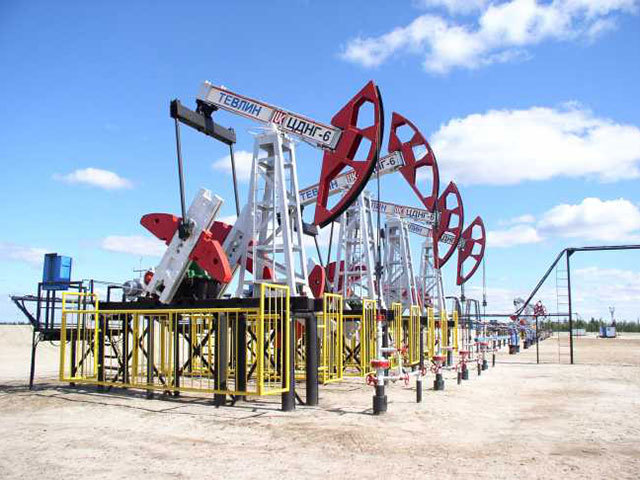
Oil held below $50 a barrel after two days of losses as government data showed U.S. crude inventories and production surged to the highest levels in more than three decades, adding to signs that a supply glut may persist.
Futures gained as much as 2.3 percent in New York, compared with a 7.6 percent decline over the past two days. Stockpiles increased for a fifth week through Feb. 6 to 417.9 million barrels, the most in records dating back to August 1982, data from the Energy Information Administration show. Crude demand is improving amid indications that prices are stabilizing, according to Saudi Arabia’s Oil Minister Ali al-Naimi.
Rising U.S. supplies are contributing to a global surplus that drove futures almost 50 percent lower last year. Further price declines are needed for the nation’s output to slow enough to re-balance global markets, Goldman Sachs Group Inc. said in a Feb. 10 report, joining Citigroup Inc. and Vitol Group, the world’s biggest independent oil trader, in predicting that the slump may not be over.
“There’s more volatility to come and the risk is to the downside,” Jonathan Barratt, the chief investment officer at Ayers Alliance Securities in Sydney, said by phone. “Market dynamics will create demand but in the short term, there’s probably more weakness because of the supply situation.”
West Texas Intermediate for March delivery climbed as much as $1.12 to $49.96 a barrel in electronic trading on the New York Mercantile Exchange and was at $49.81 at 3:45 p.m. Singapore time. The contract fell $1.18 to $48.84 on Wednesday. The volume of all futures traded was about 6 percent below the 100-day average. Prices have decreased 6.5 percent this year.
U.S. Supplies
Brent for March settlement, which expires Feb. 12, advanced as much as 84 cents, or 1.5 percent, to $55.50 a barrel on the London-based ICE Futures Europe exchange. It dropped $1.77 to $54.66 on Wednesday. The more-active April contract was up 73 cents at $56.65. The European benchmark crude traded at a premium of $5.50 to WTI.
U.S. crude stockpiles expanded by 4.87 million barrels last week, the EIA data showed, more than a projected gain of 3.75 million in a Bloomberg News survey of analysts.
Production rose by 49,000 barrels a day to 9.23 million a day, according to the Energy Department’s statistical arm. That’s the highest level in weekly data that started in January 1983. The nation’s oil boom has been driven by a combination of horizontal drilling and hydraulic fracturing, which has unlocked shale formations from Texas to North Dakota.
Market ‘Improvement’
Al-Naimi discussed a “relative improvement” in the market with Algeria’s justice minister at a meeting in Riyadh on Wednesday, the Saudi Press Agency reported. Increased demand, the stability of prices and the importance of cooperation among oil producers were mentioned, it said. Algeria is one of four OPEC members from Africa.
Saudi Arabia led a decision by the Organization of Petroleum Exporting Countries in November to maintain collective output quotas at 30 million barrels a day. The 12-member group, which supplies about 40 percent of the world’s crude, pumped 30.9 million a day in January, exceeding its target for an eighth straight month, a separate Bloomberg survey of oil companies, producers and analysts showed.
The CBOE Crude Oil Volatility Index, which measures fluctuations using options of the U.S. Oil Fund, climbed for a second day to 60.23 on Wednesday. It was at 63.14 on Feb. 5, the highest level since April 2009.
The largest U.S. refinery strike since 1980 is set to continue for at least another week after labor-contract negotiations stalled between the United Steelworkers union and companies represented by Royal Dutch Shell Plc.
The union, which is bargaining for workers at more than 200 refineries, fuel terminals, pipelines and chemical facilities across the U.S., began the strike Feb. 1 at seven sites. Talks have been suspended until Feb. 18.
Recommended for you
